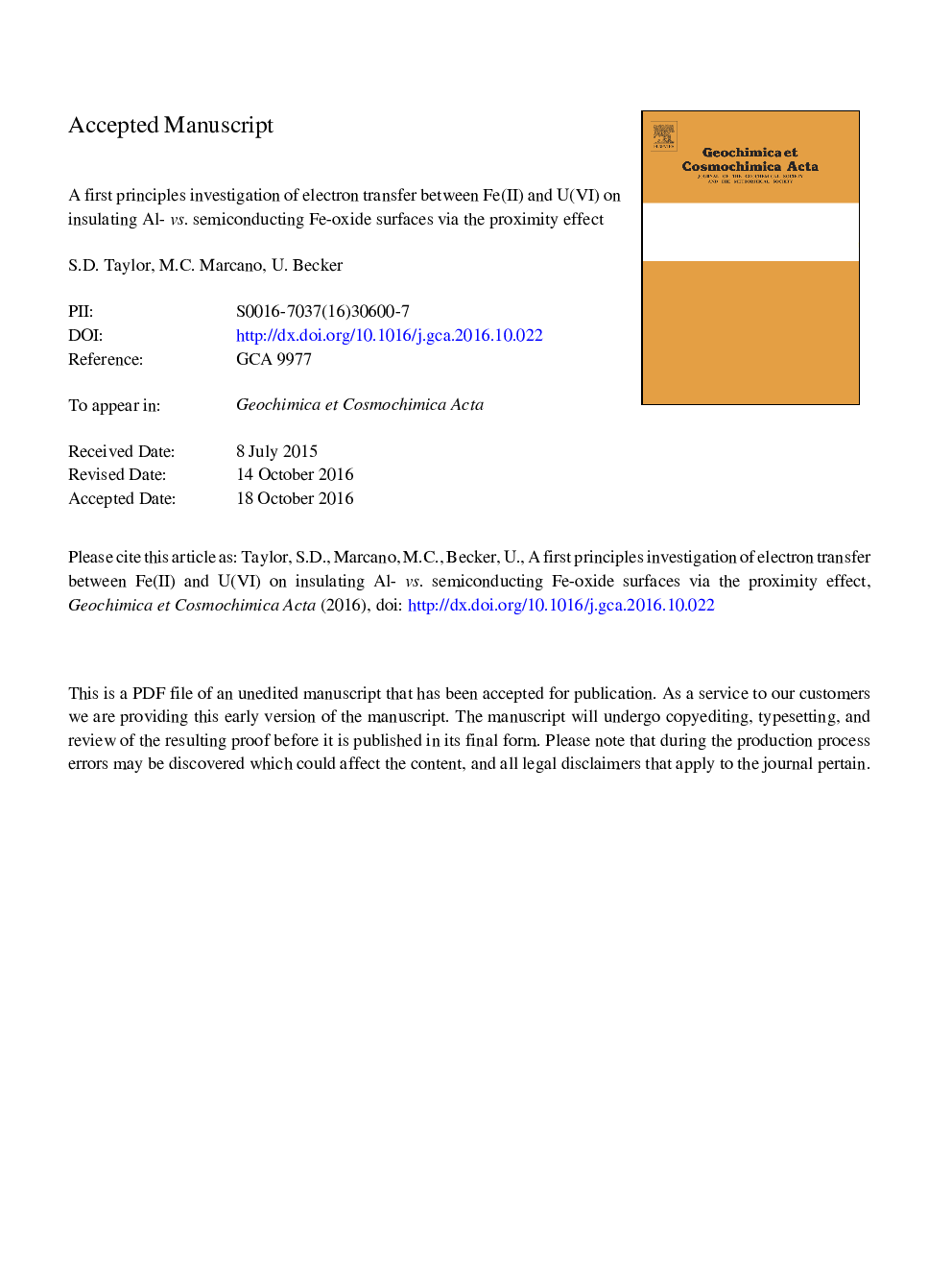| Article ID | Journal | Published Year | Pages | File Type |
|---|---|---|---|---|
| 8911055 | Geochimica et Cosmochimica Acta | 2017 | 49 Pages |
Abstract
The progression and extent of ET occurring on the semiconducting hematite (0 0 1) surface via the proximity effect depends on the electronic properties of the surface. ET between the spatially separated U(VI) and Fe(II) occurs most readily when orbitals between the Fe and U adsorbates overlap with those of neighboring O and Fe ions at the hematite surface, as shown by calculations without the Hubbard U correction. Analyses of the spins densities confirm that the U and Fe adsorbates were reduced and oxidized, respectively, (acquiring 0.33 μB and 0.11-0.20 μB, respectively), while Fe cations at the hematite surface were reduced (losing ⩽0.6 μB). If electrons are highly localized, the amount of orbital mixing and electronic coupling through the hematite surface decreases and in turn leads to a lower degree of spin transfer, as predicted by calculations with the Hubbard U correction. Thus, the proximity effect is a potential mechanism on semiconducting surfaces facilitating surface-mediated redox reactions, although its significance varies depending on the electronic properties and subsequent charge-carrying ability of the surface. These results provide insight into ET pathways and mechanisms on insulating Al- and semiconducting Fe oxide surfaces influencing the reduction U(VI) by Fe(II) that may subsequently limit uranium's transport in the subsurface.
Keywords
Related Topics
Physical Sciences and Engineering
Earth and Planetary Sciences
Geochemistry and Petrology
Authors
S.D. Taylor, M.C. Marcano, U. Becker,
